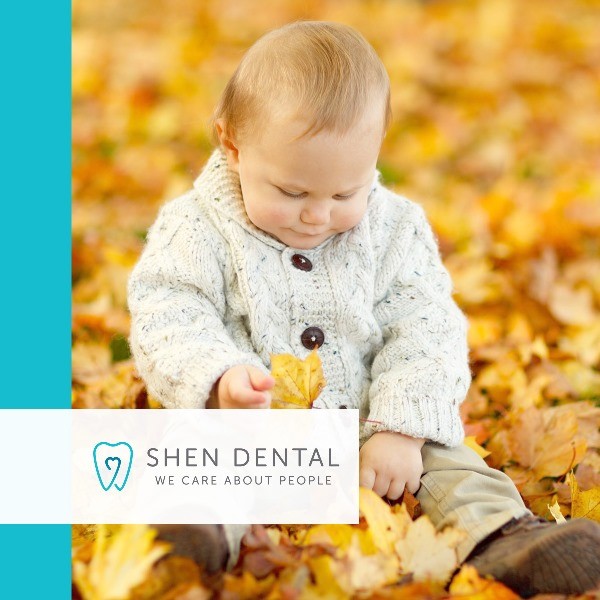When we look outside and watch all these red and yellow leaves fall from the trees, it makes us think of kids losing teeth – which makes us wonder: Is the process leading to losing teeth and losing leaves the same?
Let’s take a look baby teeth!
Did you know that primary teeth start to form as early as weeks two to four of pregnancy? By the time the embryo is eight weeks old, there are ten teeth buds on the upper and lower arches – these buds will eventually become the baby teeth! There are a total of twenty baby teeth (also referred to as primary or milk teeth); baby teeth have very thin roots that look like thread. Your baby’s first tooth can appear any time between three to twelve months of age – though most get their first tooth around six months.
Why are Primary teeth important?
Primary teeth are very important. They give the face its appearance by maintaining the arch length within the jaw, assisting in the development of the muscles of the jaw, and also help guide jaw development to allow proper spacing and an opening for permanent teeth to erupt. Primary teeth are important for the development of the child’s speech, a child’s smile, and play a role in chewing of food (although children who have primary teeth removed can still eat and chew!). Remember that decay and infection in baby teeth can cause damage to the permanent teeth developing beneath–it is crucial to maintain your child’s oral health practices!
When do children lose their Primary teeth?
Children usually start losing their baby teeth between the ages of 6 to 7 when their jaws have grown to mature size. During this period, the root of the baby tooth begins to get resorbed due to the erupting permanent tooth below. When the root is resorbed, the tooth begins to loosen and will eventually fall out. Once there is less root present to secure the baby tooth, the permanent tooth pushes upward. Kids usually lose their teeth in the order they first appeared. The top and bottom front teeth (central incisors) are usually the first to come in and the first to fall out. The order in which the permanent teeth erupt is very important. Disruption of this order – for example pre-mature lose of decayed baby teeth – may cause orthodontic problem that required expensive treatment to fix. Sometimes a child’s permanent tooth will come in directly behind the child’s baby tooth. When this happens, the child should be taken to the dentist to have the baby tooth removed.
Baby teeth and leaves?
Did you know that trees shed their leaves to help conserve water and energy? As cooler temperatures approach, tree hormones trigger the process of abscission – a process by which leaves are actively separated from the tree. The abscission process starts with trees reabsorbing valuable nutrients from their leaves, to be stored for future use in their roots. Chlorophyll (the pigment that makes leaves appear green) is one of the molecules absorbed from leaves – thereby leeching the leaves’ colour and leaving them red, orange, or gold! The abscission process ends when all the leaves from a tree have been shed, allowing a protective layer of cells grows over the exposed area where leave are no longer attached; which is kind of like when a baby tooth falls out, leaving space for a new adult tooth to fill its place!
Read more:
Teeth https://www.mykoolsmiles.com/content/what-happens-to-the-roots-of-baby-teeth http://tellmewhyfacts.com/2006/10/why-do-children-loose-their-baby-teeth.html
Leaves https://www.highlightskids.com/science-questions/how-and-why-do-leaves-fall-trees http://earthsky.org/earth/why-do-trees-shed-their-leaves






